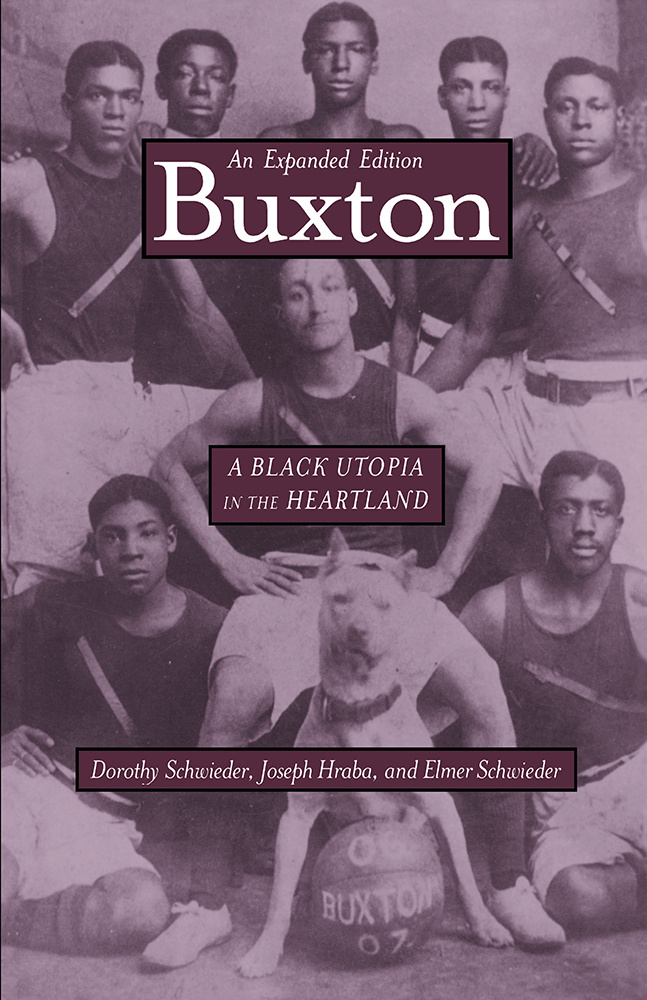Few sources before have dealt with the archaeology of African American settlements outside the Atlantic seaboard and the southern states. This book describes in detail the archaeological investigations conducted at the town site of Buxton, Iowa, a coal mining community inhabited by a significantly large population of blacks between 1900 and 1925.
David Gradwohl and Nancy Osborn present the archaeology of Buxton from “the group up” to articulate the material remains with the data acquired from archival studies and oral history interviews. They also examine the broader significance of the Buxton experience in terms of those who lived there and their children and grandchildren who have heard about Buxton all their lives.
Contents
Figures
Preface
Acknowledgments
1. Introduction
2. Scope and Schedule of Archaeological Investigations:
Initial Visit to the Buxton Townsite
Preliminary Field Investigation
Preliminary Laboratory Analysis, 1980-1981
Planning the Internship Program
The 1981 Field Season
Continuing Laboratory Work, 1981-1982
3. Buxton’s Setting: Geography, Economic Geology, and Town Planning
4. Archaeological Reconnaissance Survey of the Townsite
Reconnaissance Unit B
Reconnaissance Unit KC
Reconnaissance Unit J
Reconnaissance Unit C
Carlson Property
Reconnaissance Unit KP
Buxton Cemetery
Harris Property
5. Test Excavations and Investigation of Former Buildings
Excavation Methods and Procedures
The Stone Warehouse (Structure 1)
The Company Store (Structure 2)
The Company Office (Structure 3)
The Main YMCA (Structure 4)
The Boys’ YMCA (Structure 5)
Evidence for the Street Fronting the YMCA
The White House Hotel (Structure 6)
A Residence and Outbuildings (The Structure 7-10 Complex)
Residential Building (Structure 11)
Surface Indications of Unidentified Buildings (Structures 12-16)
The Power Plant (Structure 17)
Possible Remains of Armstrong’s Meat Market (Structure 18)
Possible Ruins of the Telegraph Office (Structure 19)
Concrete Viaduct and Steel Culvert (Structures 20 and 21)
The Mine Superintendent’s House (Structures 22-24)
The Superintendent’s Outbuildings (Structural Complex 25)
The Sewer Pipe (Structure 26)
Excavations at the South End of Site Survey Unit KP-3
6. Portable Artifacts from the Townsite
Ceramic Artifacts
Glass Artifacts
Metal Artifacts
Celluloid Artifacts
Rubber Artifacts
Shell Artifacts
Bone Artifacts
Leather and Hair Artifacts
Textile Artifacts
Paper Artifacts
Stone Artifacts
Artifacts of Miscellaneous Media
Artifacts of Composite Materials
Plant Remains
Animal Remains
7. Social and Cultural Patterns from an Archaeological Perspective
Making It: The Business, Commercial, and Occupational Enterprise
Home, Home by the Range: The Distaff and Domestic Domains
Getting Around: Transportation, Utilities, and Facilities
Having Fun: Recreation and Relaxation
Praying and Passing: Religious and Mortuary Patterns
8. Buxton in Retrospect and Prospect
Archaeological Extent and Quality of the Townsite
Buxton’s Relationship to National Trade Networks
Regional and National Significance of Buxton
Buxton’s Settlement Pattern
Ethnicity in Buxton
What about Buxton as Utopia?
References Cited
Interviews
Index


